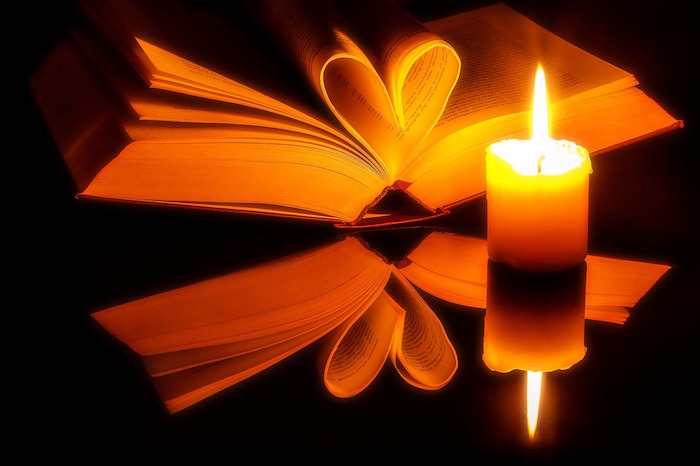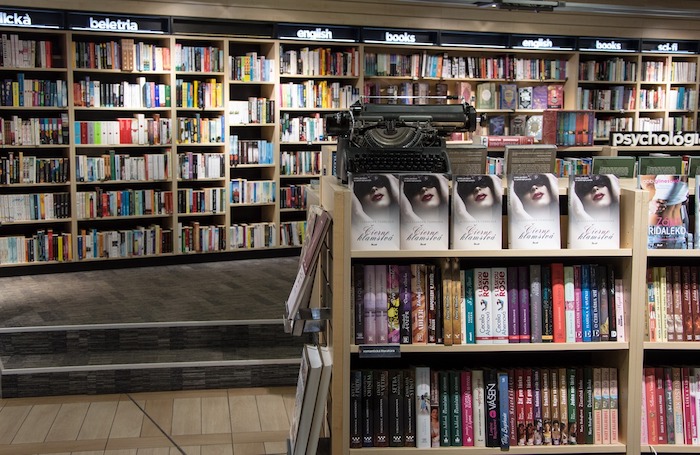Notes on the Romance Publishing Industry
On the top of popular fiction charts sits the often disrespected romance genre, but these stories of love and happily-ever-after manage to keep many publishers afloat, as readers purchase from publishers both large and small.

At one point in my life, I decided that what I really wanted to do was run a used bookshop. Shortly after making that decision, I accepted a job as a manager of a small, quaint, used bookshop not far from my home.
In my mind, I was sure the shop, its customers, and my experiences would be something like Christopher Morley described in The Haunted Bookshop. Customers would leisurely peruse the large collections of literature and poetry, people would stop by to chat about the latest offerings from Alice Munro or Tom Wolfe, and I could introduce my many customers to some of the lesser-known authors I loved best.
Reality ran more like this: When the store opened each morning, there would be group of women standing outside the door waiting to get in. Once the doors were opened they headed directly to the series (category) romance section. There was no leisure perusing. They rifled through the books, determining their picks by series and number. They would bring their piles of Loveswepts, Harlequins and Silhouettes to the counter, either buying them for a dollar each, or trading in the books they got the week before, two for one.
Other readers would head to the longer romance novels to discover books by their favorite authors they had not yet read. If those were unavailable, the selections were definitely made by judging the cover. Some liked the covers with burly, bare-chested men embracing the female protagonist, others stuck to the covers with flowers or soft pink and purple abstract designs.
Whatever the covers or the wordcount, the vast majority of books that left the shop each day were in the romance genre.
I shouldn't have been surprised. Had I done my research, I would have discovered that, according the the Romance Writers of America, romance novels constitute 40% of all popular fiction purchased in the U. S., with $1 billion in annual sales. Romance fans are voracious readers, finishing more than one book a week. Some of my customers were reading more than one a day!
A romance novel, by definition, is a book in which the central storyline revolves around a man and a woman in which there is a "guaranteed happy ending, the establishment of a lifetime commitment between one man and one woman." While you may know how they're all going to end, that doesn't mean all romance novels are alike. The genre is split up into a large number of sub-genres that range from historical to science fiction and fantasy, with romantic scenes that range from steamily erotic to the more old-fashioned romances that even my mother could read without blushing.
Romance readers, more than possibly any other genre, have truly embraced ebooks and digital reading. A recent study by AuthorEarnings.com found that nearly 90% of all romance fiction purchases are in ebook form. Romance readers are also very kind to independent and self-published books. Nearly 50% or romance purchases are from self-published or indie-published authors.
For romance writers, that means that there are many options for getting published. Most romance publishers have extensive Web sites, frequently offering tips to aspiring authors, as well as guidelines for manuscript submissions, and new small and micro publishers are popping up all the time serving different niches inside the romance genre.
A very thorough and staggeringly large list of romance publishers can be found at PublishersArchive.com.
Read These Next
A Brief History of Book Metadata
The term metadata was first coined in the 1960s, and only gained prominence after the rise of the Internet, but metadata for books existed long before the first computers.
Book Pricing Strategies
Book publishers need to consider the market, their costs, and the perceived value of the book before arriving at a retail price for any title.
Walking on a Rainbow - How I Became a Children’s Book Author
The world of children’s book publishing is extremely competitive, to say the least. It takes hard work, dedication, perseverance and commitment to become a published author.






